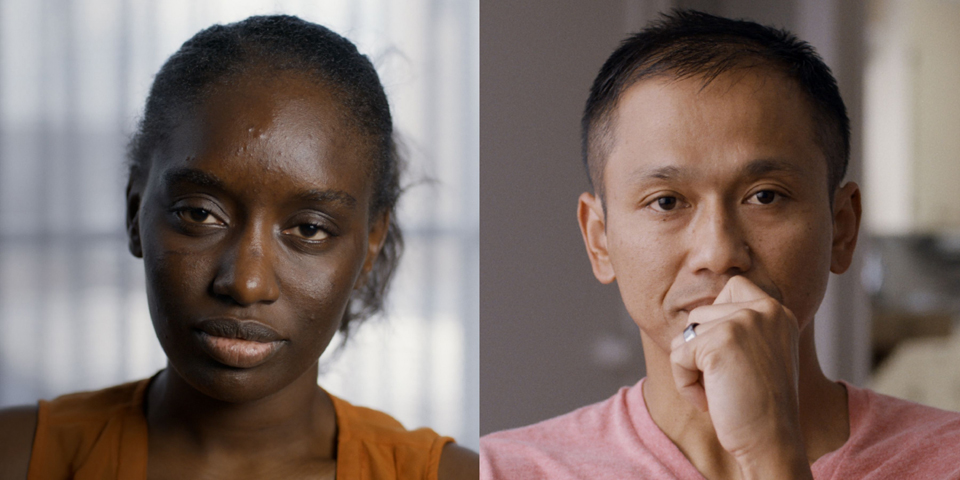
“That worry [of being undocumented] will end you, and it will try to break you.” – Living Undocumented
In the 2016 presidential election immigration was a hot button issue. Then-presidential candidate Donald Trump made the so-called “crisis” of undocumented people coming into the United States a cornerstone of his campaign strategy. With slogans such as “build the wall” and by creating a narrative that undocumented immigrants were stealing jobs and driving down wages of American citizens, Trump entered the White House fueling anti-immigrant hate and disdain.
The new Netflix documentary series, Living Undocumented, aims to debunk the myths around immigration and humanize the image of the faceless non-descript immigrant boogeyman Trump has created. It’s an engrossing series with heart-breaking stakes and no neat happy endings that will implore viewers to think more critically about immigration reform.
Co-directed by Aaron Saidman (Leah Remini: Scientology and the Aftermath) and Anna Chai who also executive produced with Selena Gomez (13 Reasons Why), Mandy Teefey, Eli Holzman (American Idol), and Sean O’Grady, the series follows the journey of eight undocumented immigrant families living in the United States. Living Undocumented was produced by the Industrial Media-owned production company, The Intellectual Property Corporation.
The six-episode first season follows eight families from a variety of immigrant backgrounds, showcasing the pressures and constant fear faced by the undocumented in the United States. Interwoven throughout the personal family stories is testimony from immigration advocates, experts, and professionals who speak to the broader political context of immigration reform.
Each episode is 45 to 50 minutes full of information, story, and heart. It’s not a happy watch necessarily but an important program giving a voice to certain sectors of immigrants not always covered in the mainstream media narrative.
The series does well to put the current state of immigration reform in a larger historical timeline. Although much of the focus is on Trump’s current tactics, such as the zero-tolerance policy, and the dangerous rhetoric he enables, the program makes clear from the first episode that these issues did not begin with Trump alone.
In 1996 then-President Bill Clinton signed into law the harshest immigration bill the nation had seen in decades. Clinton’s Illegal Immigration Reform and Immigrant Responsibility Act (IIRIA) was a bundle of provisions that increased penalties on immigrants who had violated U.S. law in some way. These penalties applied to both unauthorized immigrants who violated immigration law and legal immigrants who committed other crimes. The law also made it nearly impossible for undocumented immigrants to receive cancellation of deportation. The effects of this law still linger over immigration reform today. The series points this out with clips of Clinton’s speech on immigration.
It also goes a step further in pointing out how under the Obama administration many immigrants were deported as well.
Data shows that Barack Obama deported more people than any president in the nation’s history. Living Undocumented asserts that during Obama’s presidency he directed U.S. Immigration and Customs Enforcement (ICE) to focus on criminals, not families– a direction the series notes that Trump has done away with. By presenting a larger timeline the program shows that responsibility for anti-immigrant sentiment doesn’t lie solely with Trump and the Republicans.
Another highlight of the series is how it corrects some of the major myths and false narratives surrounding those who come to the United States without valid papers. Although Trump has often presented a story that undocumented immigrants are usually violent male Mexican and Latin American gang members flooding Mexico’s border for years, in reality immigration was low up until 2019, and many coming into the U.S. are women and children from various places seeking asylum from violence and danger in their often war-torn countries.
The series shows that the Mexico “border crisis” that the Trump administration tries to play up is an oversimplification of immigration in the nation. Trump campaigned on the idea of a border crisis that simply just didn’t exist.
Living Undocumented also shows the “why” of immigration, or rather what has made many families flee to the United States. Mainstream media attention often is given to what happens to some immigrants once they arrive, but little attention is given to the political conditions that drive them to the United States in the first place. Living Undocumented explores this in a number of episodes while shedding light on certain immigrants that aren’t usually talked about in the media.
One particular story that viewers should pay attention to is that of Awa. Awa is a young woman and U.S. citizen whose father is being detained by ICE. Awa’s parents hail from the African country Mauritania.
The Islamic Republic of Mauritania has a history and present filled with violence, ethnic discord, and slavery. Slavery in Mauritania wasn’t outlawed until 1981, owning a slave wasn’t made illegal until 2007, and yet modern-day slavery is known to still exist there today. In the 1980s Arab nationalism resulted in the expulsion of nearly 70,000 sub-Saharan African Mauritanians. Awa’s father is one of the many victims of this expulsion. Many Mauritanians have worked and lived in the United States for decades without incident. The series points out that under Trump they are now some of the main targets of ICE detainment and deportations. Awa and her father Amadou’s story, and others like them, are the types of stories you’re unlikely to get an in-depth picture of outside of this series.
Living Undocumented humanizes a topic that has been made a faceless political point. In that regard, it may convince some who question why undocumented people can’t come into the country “the right way.” It reveals the harsh reality and roadblocks faced by those seeking citizenship “legally.” The second task it accomplishes is it gives those who advocate for immigrants new facts, figures, and talking points that they may not have had before.
It’s an important program to watch, especially as the nation marches towards the 2020 presidential election with immigration reform sure to be a main topic. The series doesn’t have a neat happy ending, but it’s clearly imploring its viewers, who are potential voters, to try to fight for one.










